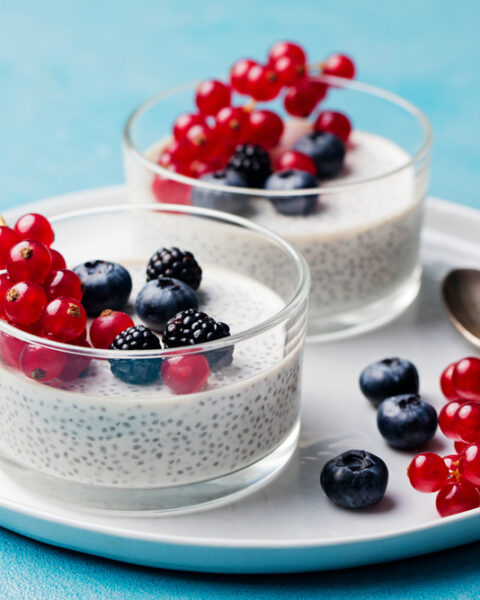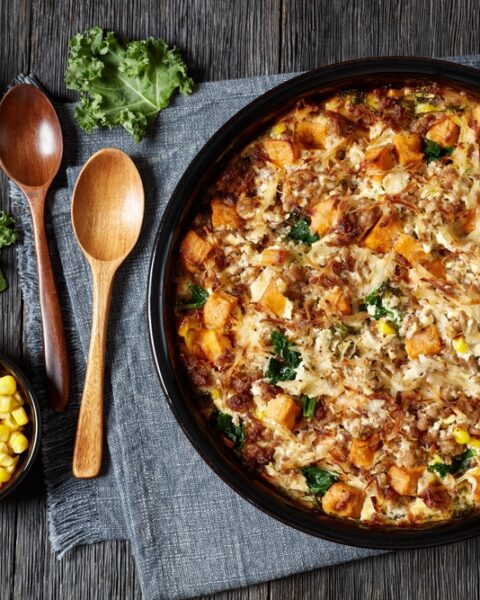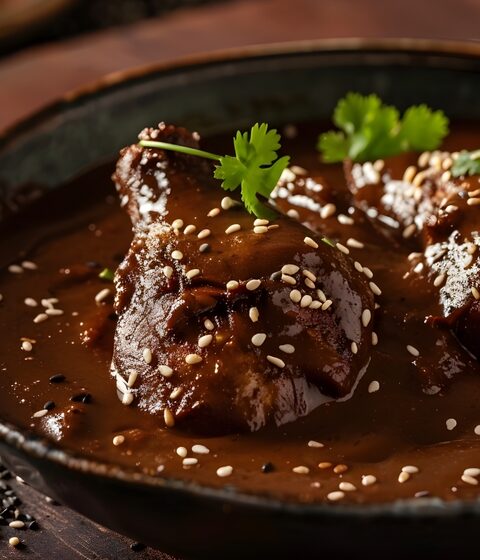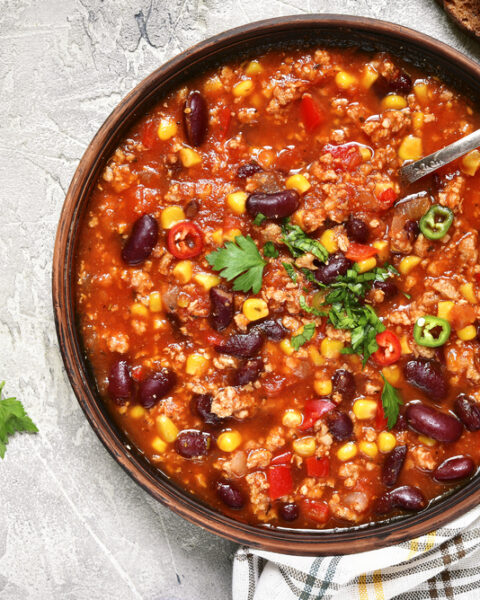Southeast Asia overflows with unique and flavorful snacks, each offering a glimpse into the region’s diverse culinary heritage. From crispy, golden treats to refreshing desserts and savory bites, these snacks showcase the vibrant ingredients and creative cooking techniques that make Southeast Asian cuisine so beloved worldwide. Many of these foods are staples at bustling street markets and traditional gatherings, where locals and visitors alike can savor the unforgettable flavors. With a blend of sweet, savory, spicy, and tangy elements, each snack has its own story, deeply rooted in the culture of its origin. These are some of the must-try Southeast Asian snacks you should experience at least once to enjoy a taste of authentic regional flavors.
Contents
- 1 Pisang Goreng (Indonesia)
- 2 Som Tum (Thailand)
- 3 Kaya Toast (Singapore & Malaysia)
- 4 Halo-Halo (Philippines)
- 5 Mont Lin Ma Yar (Myanmar)
- 6 Kerupuk (Indonesia)
- 7 Khao Lam (Thailand & Laos)
- 8 Chendol (Malaysia & Singapore)
- 9 Pandan Cake (Indonesia)
- 10 Lumpia (Philippines)
- 11 Martabak (Indonesia)
- 12 Bánh Xèo (Vietnam)
- 13 Satay (Malaysia & Indonesia)
- 14 Puto (Philippines)
- 15 Kerak Telor (Indonesia)
- 16 Laap (Laos)
- 17 More From RetailShout
- 18 15 Stylish Target Finds That Look Way Beyond Their Price
- 19 10 November Food and Drink Pairings for Every Fall Occasion
Pisang Goreng (Indonesia)
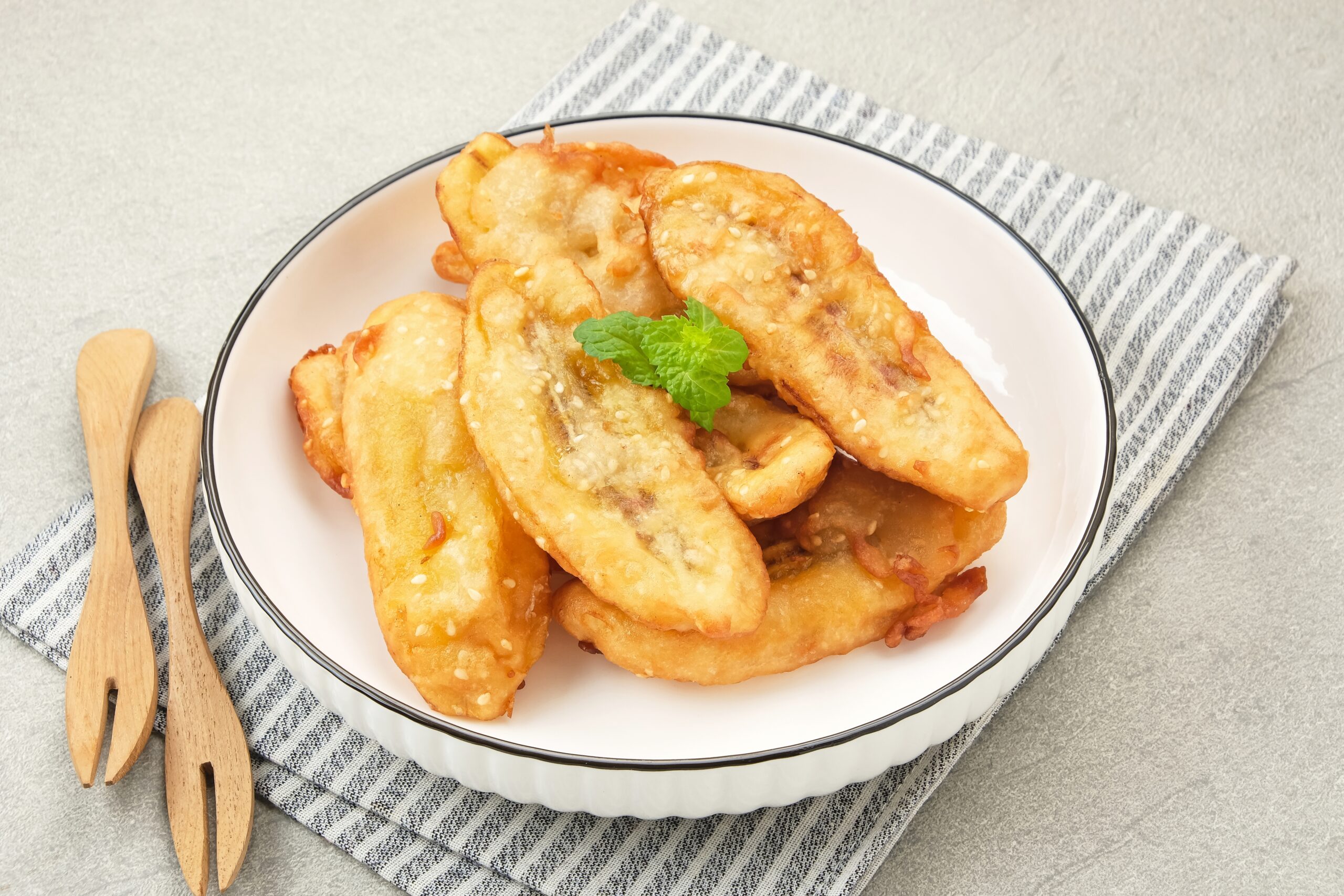
Pisang Goreng, or fried bananas, is a beloved Indonesian street snack known for its crispy and sweet flavor. To make this snack, you’ll need 4 ripe bananas, sliced lengthwise, and a batter made with 1 cup of flour, 1 tablespoon of sugar, 1/4 teaspoon of salt, and 3/4 cup of water. Dip each banana slice into the batter, ensuring an even coating. Heat oil to about 350°F, then fry the coated bananas until they turn golden brown, about 2-3 minutes per side. Once fried, place the bananas on paper towels to absorb any excess oil. Some variations of Pisang Goreng include shredded coconut or sesame seeds in the batter for an added crunch and flavor. This warm, crispy snack is perfect for satisfying sweet cravings and is often enjoyed fresh from the fryer.
Som Tum (Thailand)
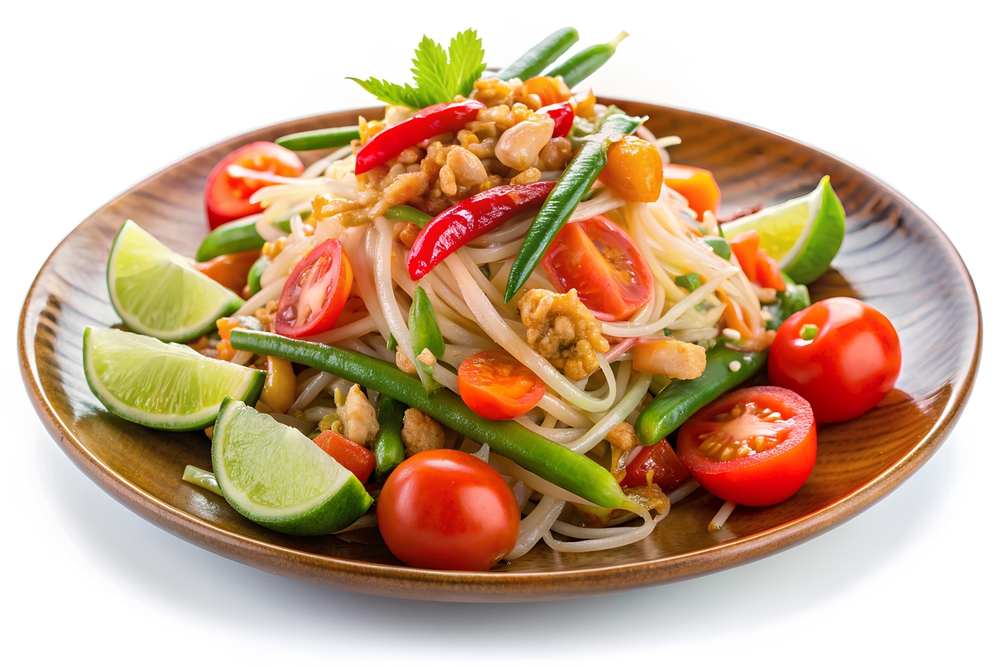
Som Tum, also known as green papaya salad, is a classic Thai dish with a blend of spicy, sour, and sweet flavors. To make it, use 2 cups of shredded green papaya, 1/2 cup of cherry tomatoes, 1/4 cup of green beans (cut into 1-inch pieces), and 1/4 cup of roasted peanuts. In a mortar and pestle, crush 2 cloves of garlic and 1-3 bird’s eye chilies to release their flavors. Add 2 tablespoons of fish sauce, 1 tablespoon of lime juice, and 1 teaspoon of palm sugar to the mix, creating a tangy dressing. Toss all the ingredients together until well combined and let the flavors meld for a few minutes. Som Tum is often served with sticky rice or grilled meats, making it a refreshing and zesty addition to any meal. This vibrant salad is perfect for warm days, showcasing the fresh, bold flavors of Thai cuisine.
Kaya Toast (Singapore & Malaysia)

Kaya toast is a popular breakfast snack in Singapore and Malaysia, known for its sweet, creamy coconut and pandan jam. For this snack, you’ll need 4 slices of white bread, 4 tablespoons of kaya (coconut jam), and 2 tablespoons of salted butter. Toast the bread until golden brown, then spread 1 tablespoon of kaya and 1/2 tablespoon of butter on each slice. You can enjoy it open-faced or sandwich the slices together for a creamier bite. For a traditional Singaporean breakfast experience, serve kaya toast with two soft-boiled eggs (cooked for 5 minutes in boiling water) and season with soy sauce and white pepper. This delightful snack pairs perfectly with a cup of coffee or tea, balancing sweet and savory flavors. Kaya toast offers a simple yet unforgettable taste of Southeast Asian comfort food.
Halo-Halo (Philippines)
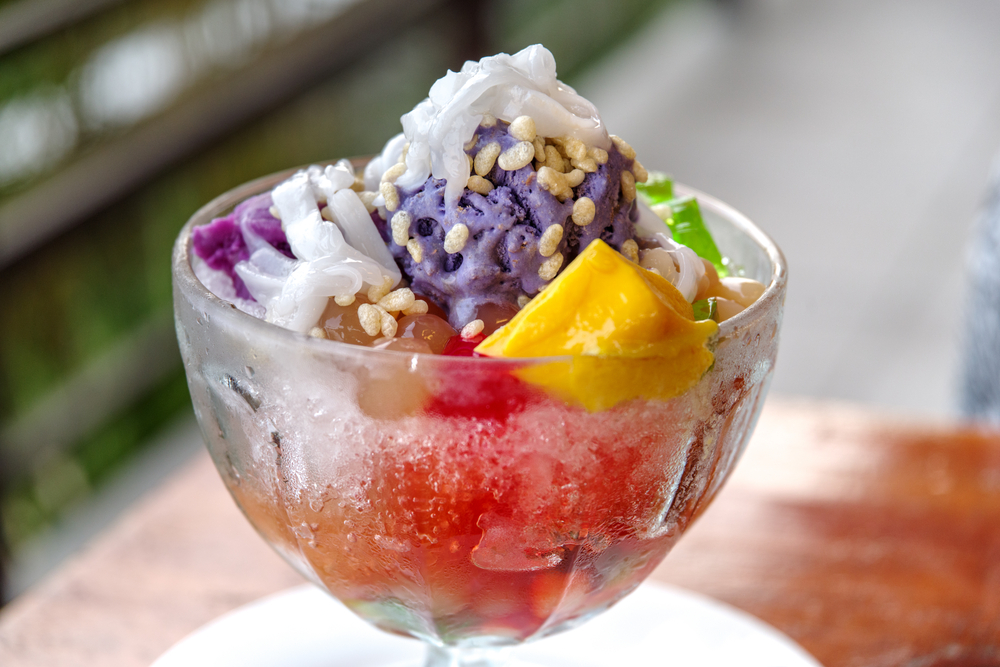
Halo-Halo is a colorful and refreshing Filipino dessert enjoyed on hot days. Start by layering 1/4 cup each of sweetened red beans, jackfruit, sweetened banana slices, and coconut jelly in a tall glass. Next, add 1/2 cup of crushed ice, then pour over 1/4 cup of evaporated milk for a creamy consistency. Top with a scoop of ube (purple yam) ice cream or a slice of leche flan for a rich finish. Some versions drizzle 1 tablespoon of sweetened condensed milk for added sweetness. Halo-Halo, which means “mix-mix” in Filipino, is stirred together before eating, creating a blend of flavors and textures in every spoonful. This dessert is as enjoyable to look at as it is to eat, making it a must-try Filipino treat.
Mont Lin Ma Yar (Myanmar)
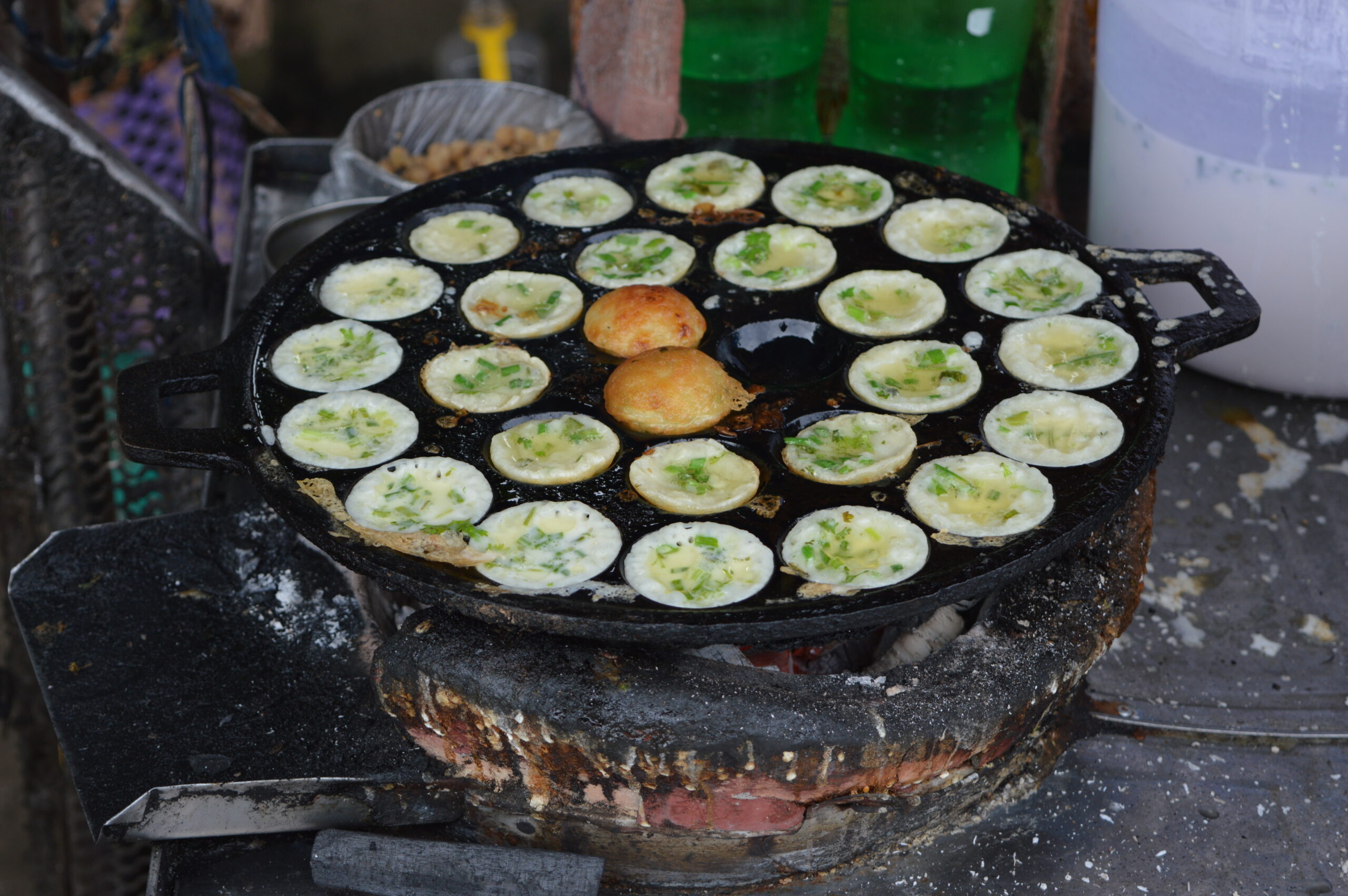
Mont Lin Ma Yar, or “Husband and Wife Snacks,” is a popular Burmese street food known for its blend of crispy and soft textures. This snack is made with two types of batter—chickpea flour and rice flour—which are poured onto a hot griddle to form small round disks. Before the batter fully cooks, toppings like quail egg, green onions, and a pinch of salt are added. The disks are then paired together, creating a small “sandwich” with a savory filling inside. The result is a warm, crispy exterior with a soft, flavorful center. This unique and delicious treat is a favorite among locals and a must-try for visitors exploring Myanmar’s street food scene.
Kerupuk (Indonesia)
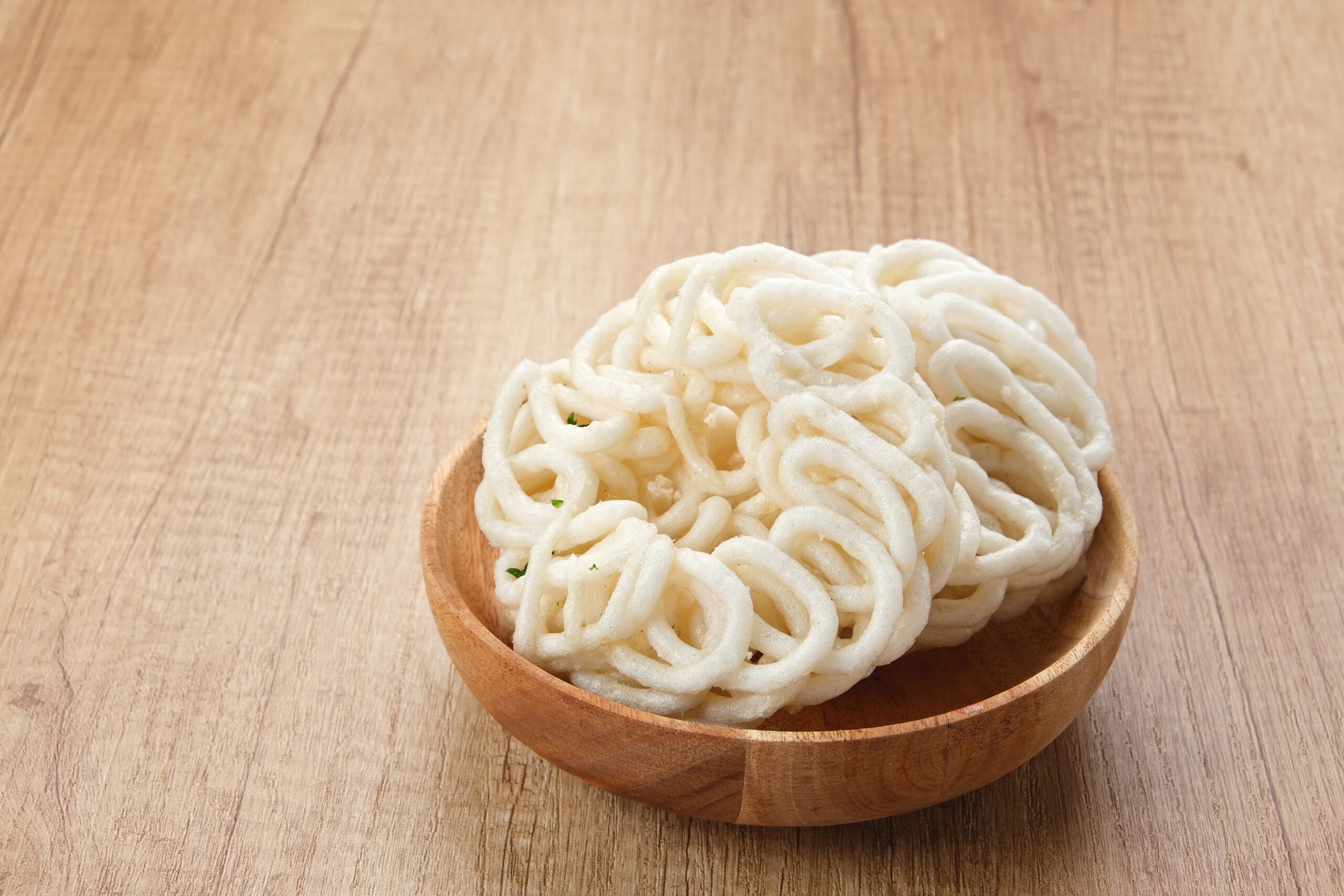
Kerupuk, or Indonesian crackers, is a crispy snack that’s often served alongside meals or enjoyed alone. Made from tapioca flour mixed with ground fish or shrimp, kerupuk has a light, airy texture. To make it, combine 1 cup of tapioca flour, 1/2 cup of ground dried shrimp, 1/4 teaspoon of salt, and 1/4 teaspoon of sugar. Add 1/2 cup of water to form a thick dough, then roll the dough thinly and cut it into desired shapes. Sun-dry the pieces for a day or two until they’re completely hard. Fry the dried pieces in hot oil (about 350°F) until they puff up and become crisp. Kerupuk adds a delightful crunch and slight seafood flavor to Indonesian meals and is a perfect addition to dishes like nasi goreng or soto soup.
Khao Lam (Thailand & Laos)
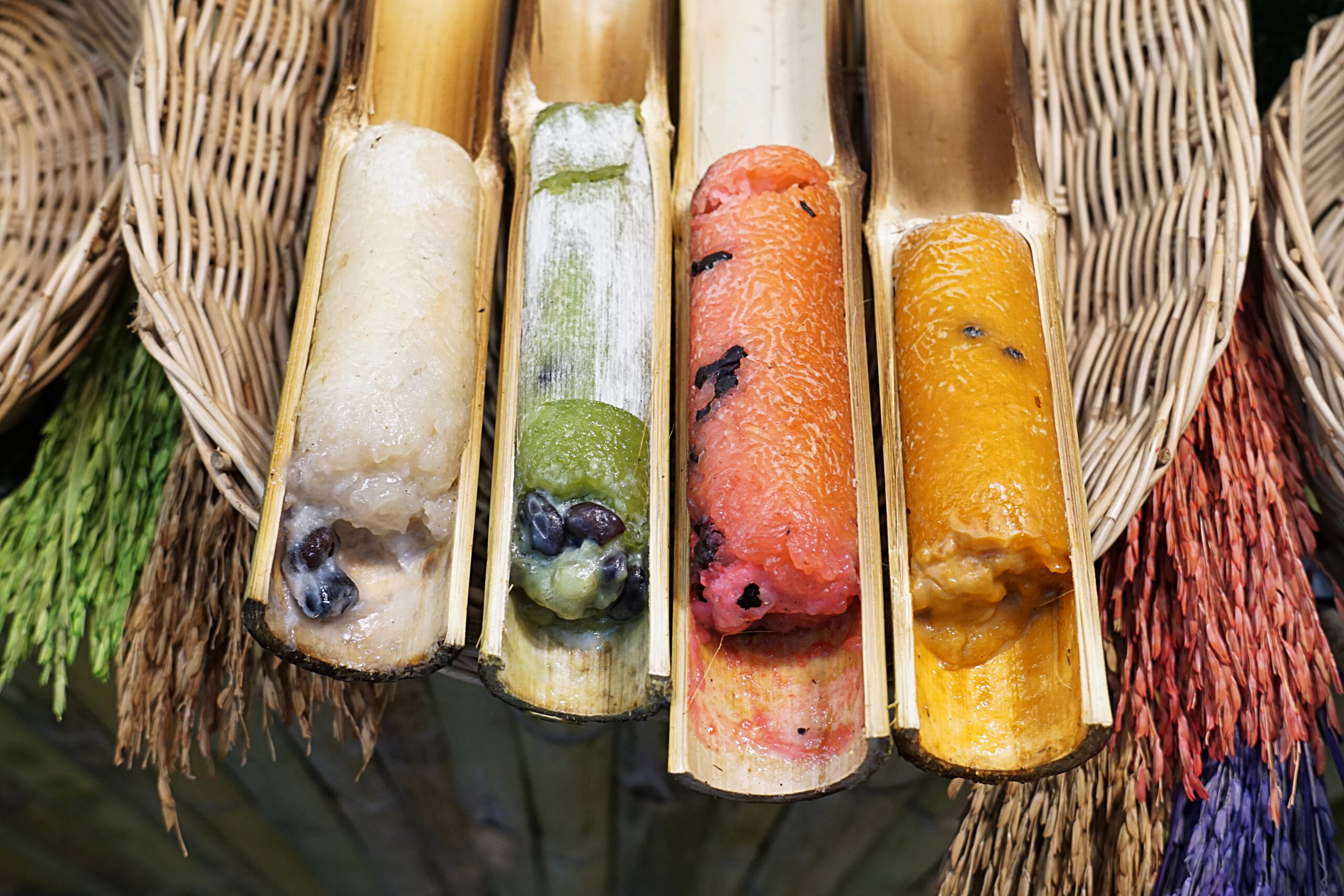
Khao Lam is a traditional Thai and Laotian snack made by cooking sticky rice in bamboo tubes. To make it, mix 1/2 cup of glutinous rice with 1/4 cup of coconut milk, 1 tablespoon of sugar, and 1 tablespoon of cooked red or black beans for added texture. Pack the mixture into a cleaned bamboo section, then seal the opening with banana leaves. Roast the bamboo over a medium flame for about 1 hour, rotating regularly for even cooking. Once done, split the bamboo to reveal the aromatic sticky rice inside. The bamboo infuses a subtle smoky flavor into the rice, making it earthy and mildly sweet. Khao Lam is a popular treat enjoyed during festivals and special occasions in Thailand and Laos.
Chendol (Malaysia & Singapore)
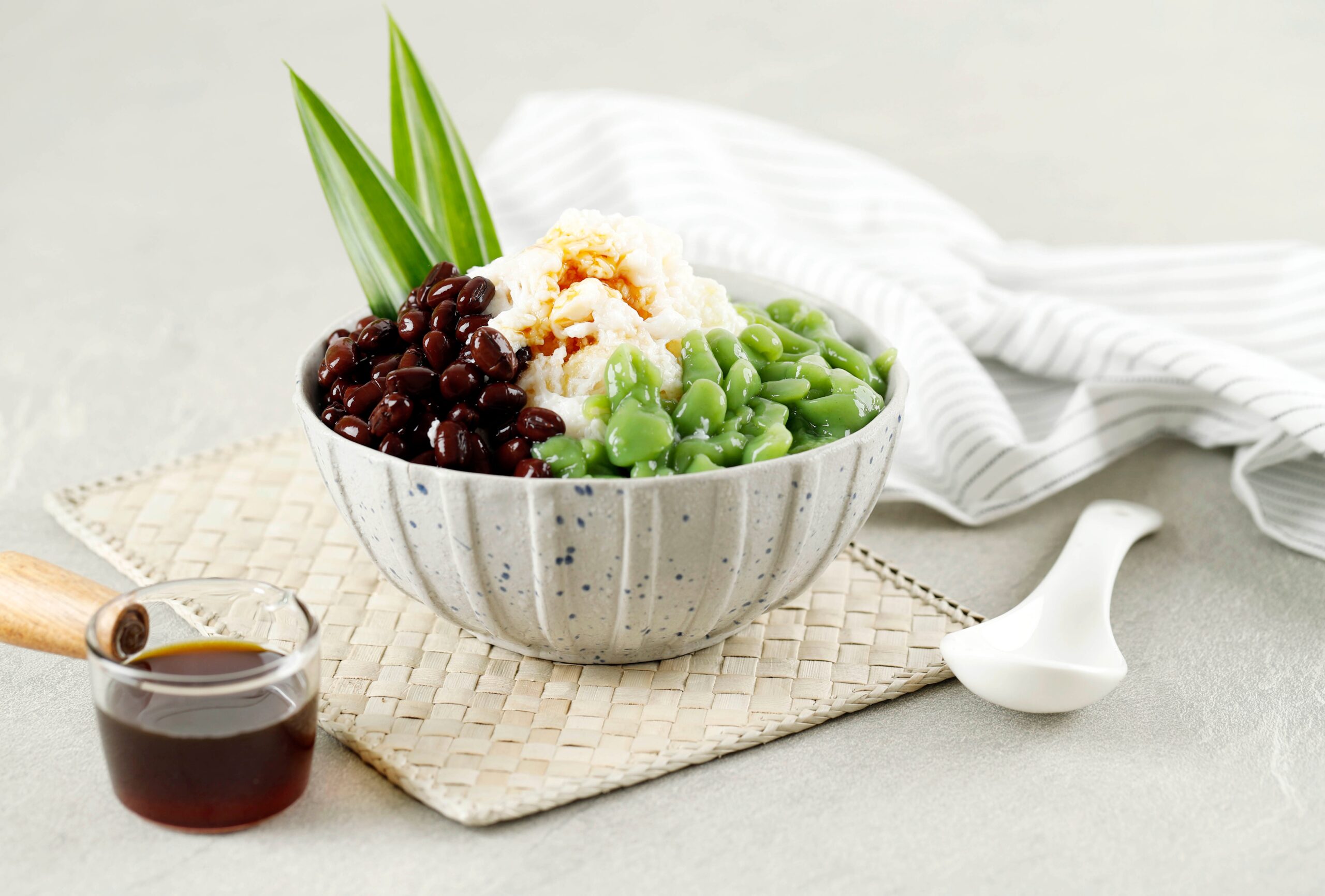
Chendol is a refreshing dessert popular in Malaysia and Singapore, known for its unique green jelly noodles. To assemble this dessert, place 1/2 cup of green rice flour noodles in a bowl, then add 1/2 cup of coconut milk and 1/4 cup of shaved ice. Drizzle 2 tablespoons of palm sugar syrup (gula melaka) over the ice, which adds a deep caramel flavor. Some variations include sweetened red beans or sticky rice for additional texture and richness. The combination of creamy coconut milk, earthy palm sugar, and chewy noodles creates a distinctive flavor profile. Chendol is ideal for warm weather, as it provides a cooling, sweet treat with every spoonful.
Pandan Cake (Indonesia)
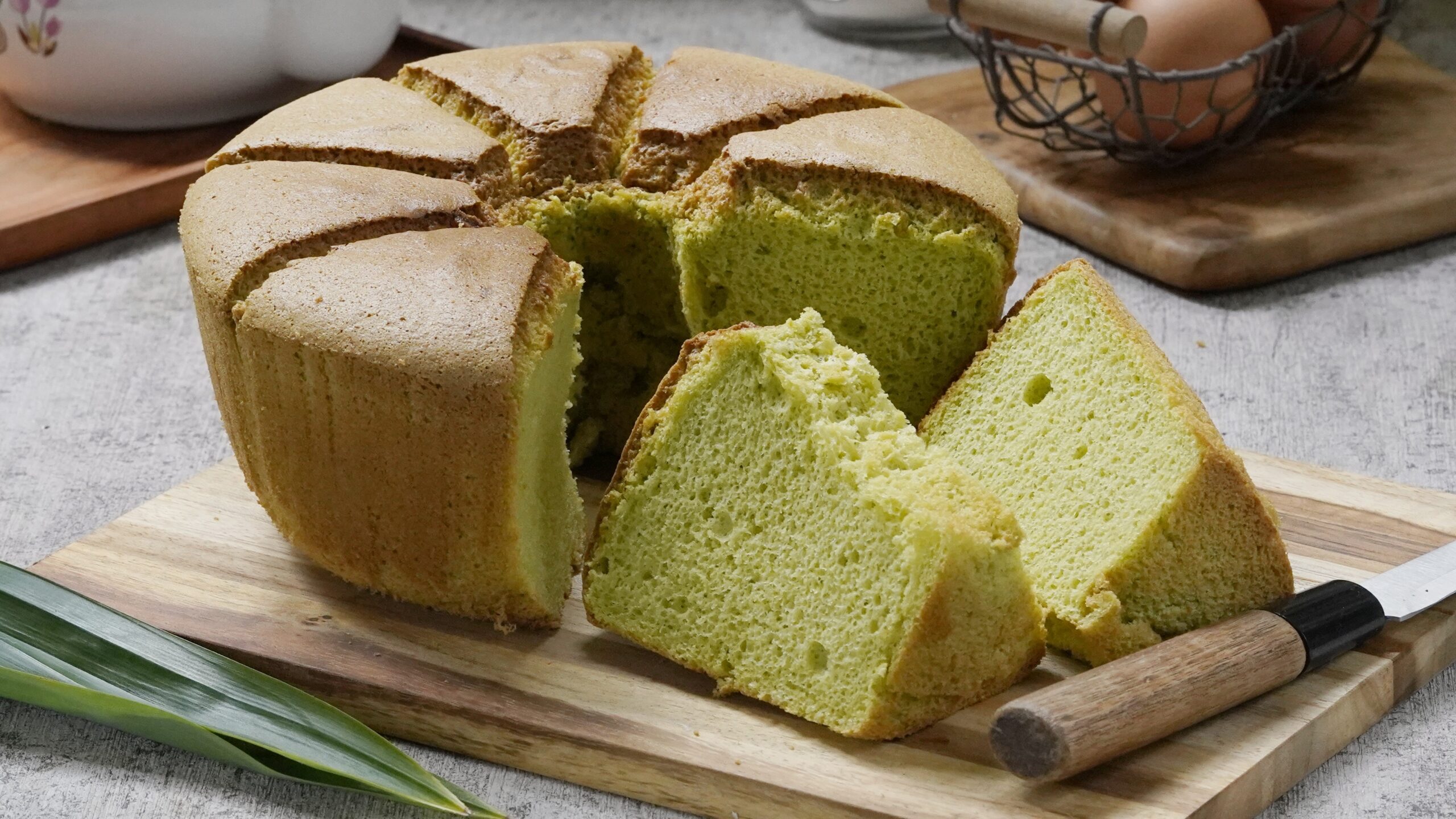
Pandan cake, also known as pandan chiffon cake, is a light, fragrant dessert made with the aromatic pandan leaf. For the cake, you’ll need 1 cup of cake flour, 1/2 cup of sugar, 1/2 cup of coconut milk, 1/4 cup of fresh pandan juice (from blended pandan leaves), and 4 eggs, separated. Begin by beating the egg whites with half of the sugar until they reach stiff peaks. In another bowl, combine egg yolks, the remaining sugar, coconut milk, and pandan juice, then fold in the flour and egg whites. Bake at 350°F for 30-35 minutes, or until a toothpick inserted comes out clean. The cake has a soft, airy texture and a beautiful green color from the pandan. Lightly dust with powdered sugar before serving to enhance its appearance and flavor.
Lumpia (Philippines)
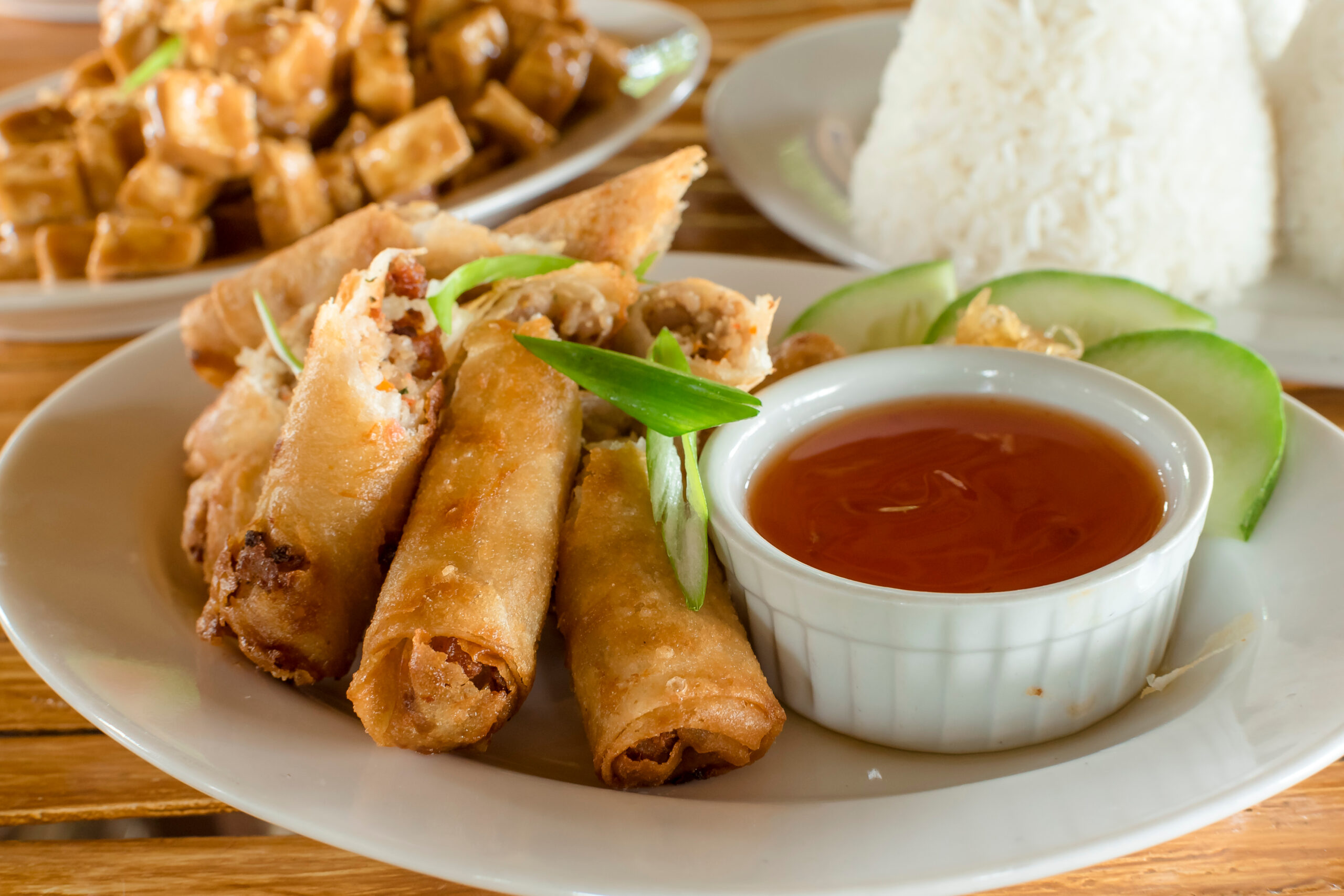
Lumpia, or Filipino spring rolls, are crispy, savory snacks filled with minced meat and vegetables. To prepare, you’ll need 1/2 pound of ground pork, 1/4 cup of grated carrots, 1/4 cup of minced onions, and salt and pepper to taste. Place a tablespoon of the filling in each spring roll wrapper and roll tightly, sealing the edges with a little water. Heat oil to about 350°F, then fry the lumpia for 2-3 minutes on each side until golden brown and crispy. Drain on paper towels to remove excess oil. Serve with a sweet chili sauce for dipping, which adds a delicious contrast to the savory filling. Lumpia is a favorite at Filipino gatherings and is enjoyed as a popular street food.
Martabak (Indonesia)
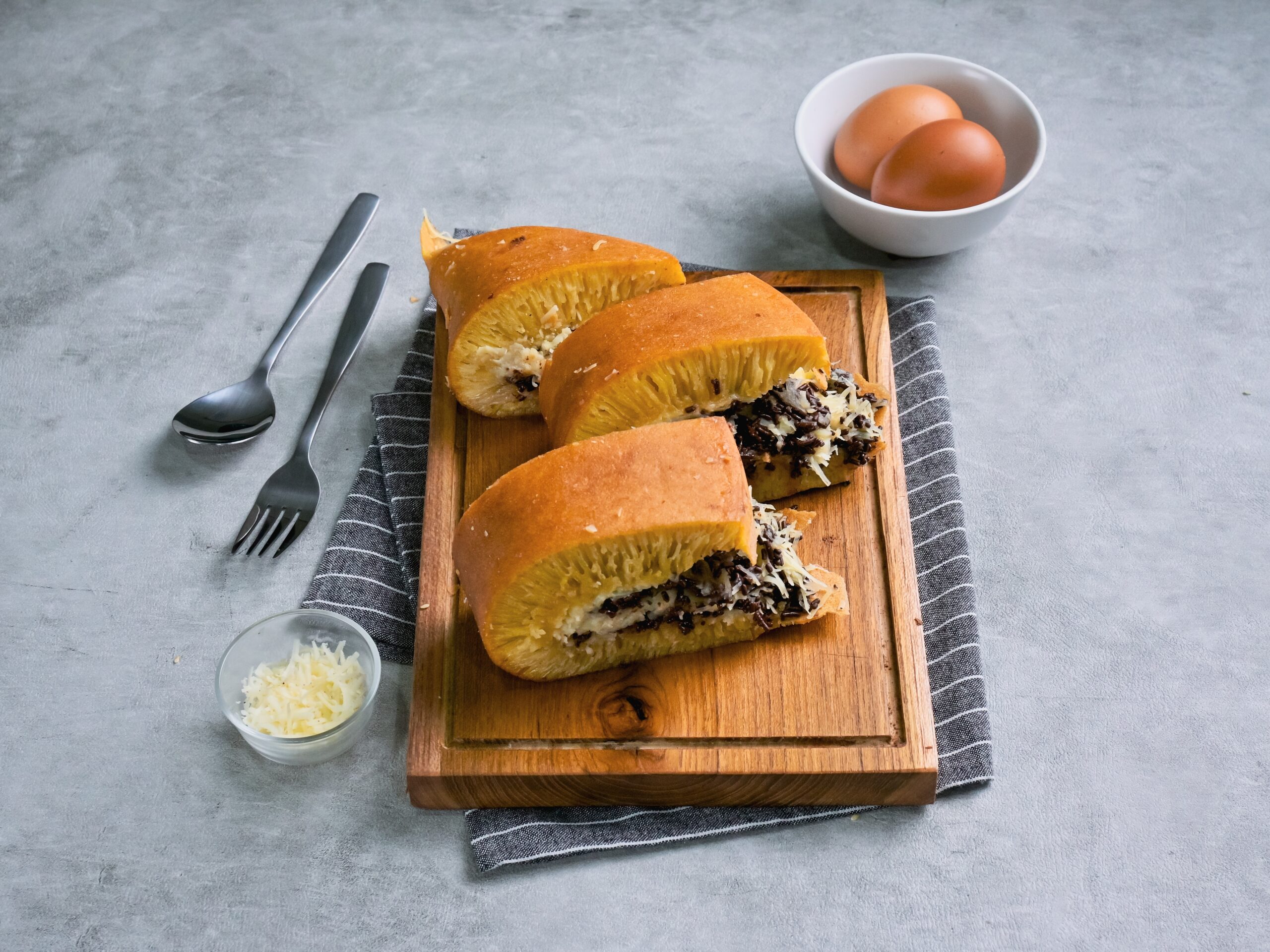
Martabak is a savory Indonesian pancake filled with spiced meat, making it a hearty and flavorful snack. For the filling, use 1/2 pound of ground beef, 1 diced onion, 2 chopped green onions, 1 clove of minced garlic, and season with salt and pepper to taste. For the pancake batter, combine 1 cup of flour, 1/4 teaspoon of salt, and 3/4 cup of water, mixing until smooth. Roll out the dough, fill with the beef mixture, and fold into a square shape. Fry in hot oil (about 350°F) until crispy and golden on both sides, around 5 minutes in total. Martabak is often served with pickled vegetables or a spicy dipping sauce, adding a tangy contrast to its rich, savory flavor. This street food favorite is perfect for satisfying hunger with its crispy exterior and juicy filling.
Bánh Xèo (Vietnam)
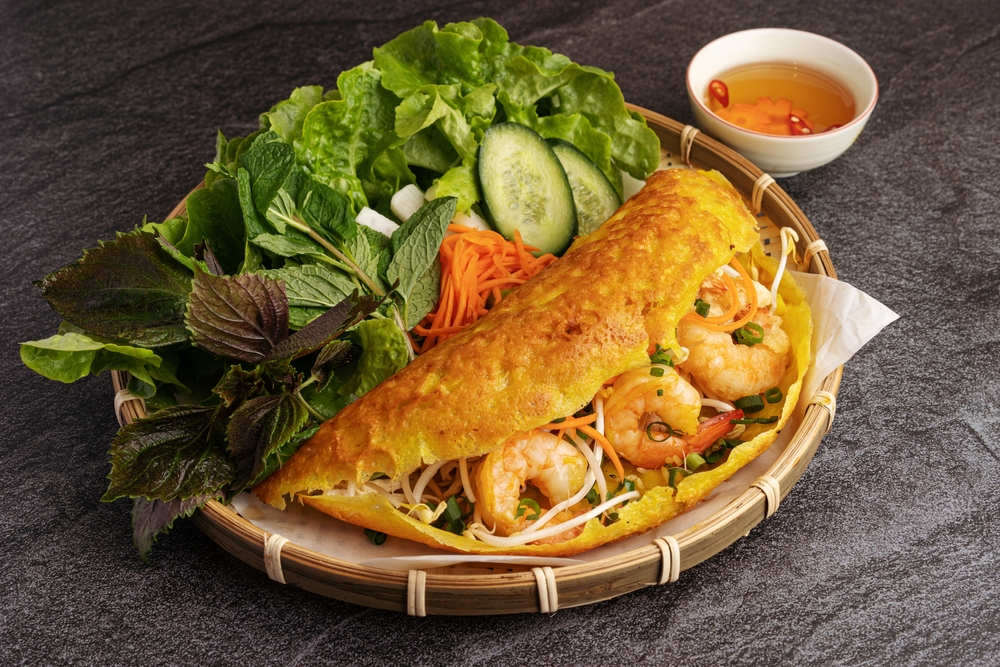
Bánh Xèo, or Vietnamese sizzling pancakes, is a crispy, savory dish filled with shrimp, pork, and bean sprouts. To make the batter, combine 1 cup of rice flour, 1 cup of coconut milk, 1/4 teaspoon of turmeric powder, and 1/2 cup of water. Pour a thin layer of batter into a hot, oiled skillet, then add a few shrimp, slices of pork, and a handful of bean sprouts. Cook until the pancake’s edges turn crispy, then fold in half. Serve Bánh Xèo with fresh herbs, lettuce, and a dipping sauce made from fish sauce, lime juice, sugar, and chopped chilies. Each bite is a perfect balance of crispy batter, savory fillings, and fresh greens. Wrapping the pancake in lettuce adds an extra crunch and burst of freshness.
Satay (Malaysia & Indonesia)
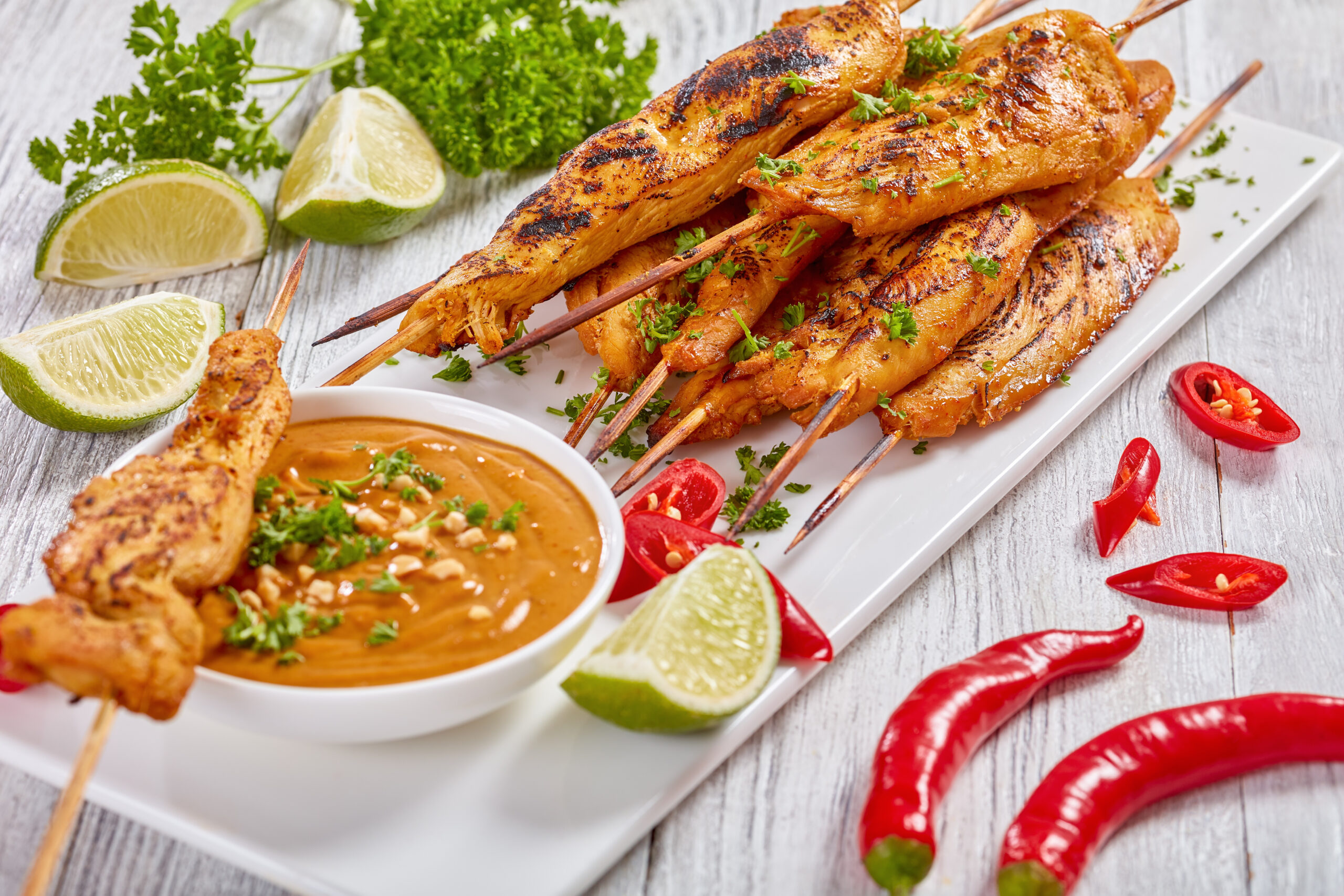
Satay, a popular snack across Malaysia and Indonesia, is skewered grilled meat served with a rich peanut sauce. For the marinade, combine 2 tablespoons of turmeric, 1 tablespoon of cumin, 2 tablespoons of soy sauce, and 1 clove of minced garlic. Use this to marinate 1 pound of chicken pieces for at least 30 minutes. Grill the skewers over medium heat for 3-4 minutes on each side until they are cooked through and slightly charred. For the peanut sauce, mix 1/2 cup of peanut butter, 1 tablespoon of soy sauce, 1/2 cup of coconut milk, and 1 teaspoon of sugar until smooth. Satay is often enjoyed with rice cakes, cucumber slices, and onion for a refreshing accompaniment. The combination of smoky, tender meat with creamy peanut sauce makes this snack unforgettable.
Puto (Philippines)
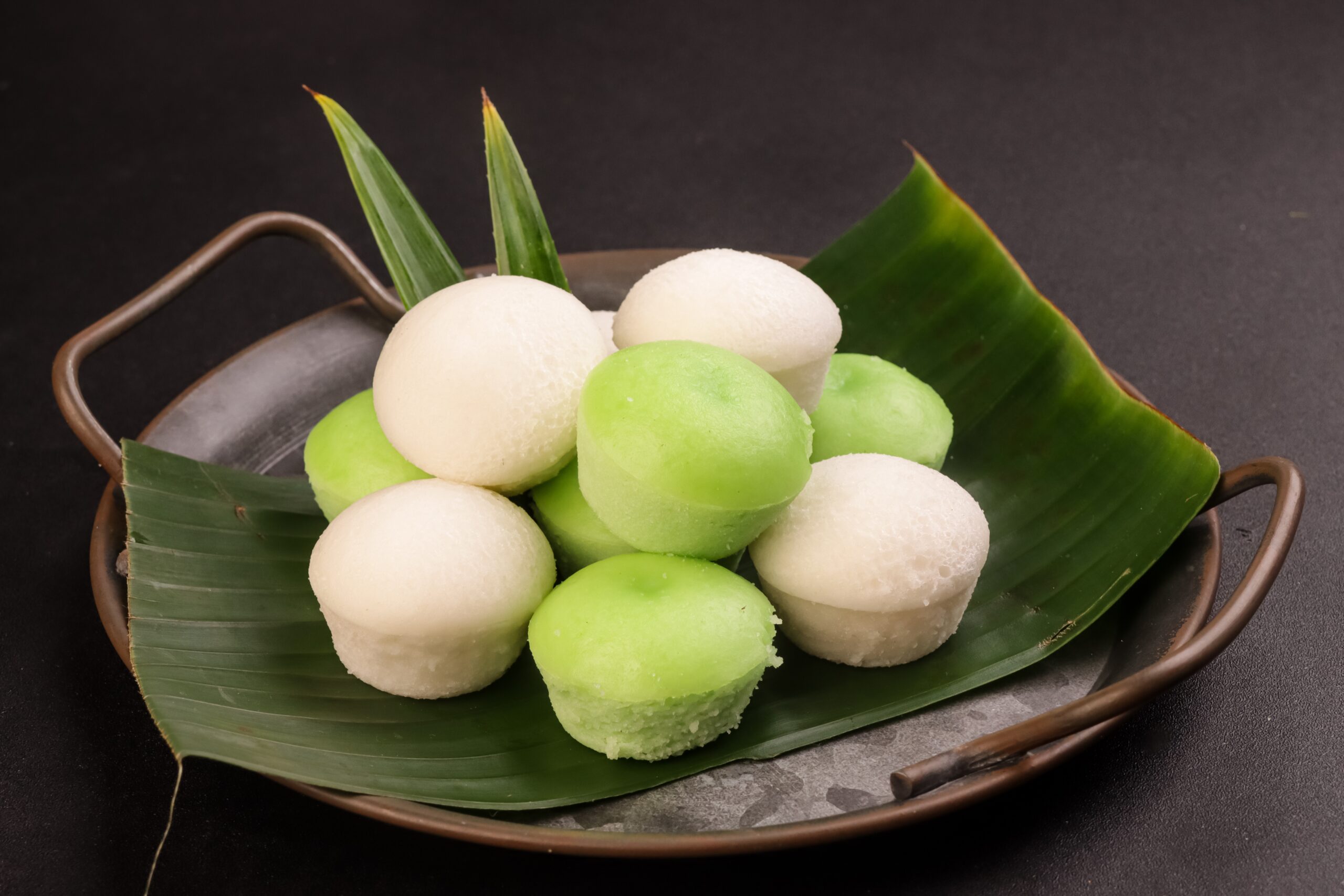
Puto is a steamed Filipino rice cake that’s soft, fluffy, and slightly sweet. To make, mix 1 cup of rice flour, 1/2 cup of sugar, and 3/4 cup of coconut milk into a smooth batter. Pour the batter into small, greased molds and steam over medium heat for 15-20 minutes, or until the cakes are set and bouncy. For added flavor, place a slice of cheese or salted egg on top before steaming. Puto’s mild sweetness pairs well with savory Filipino dishes like dinuguan (pork blood stew). The light, airy texture and subtle coconut flavor make it a comforting treat. This versatile snack can be enjoyed any time of the day.
Kerak Telor (Indonesia)
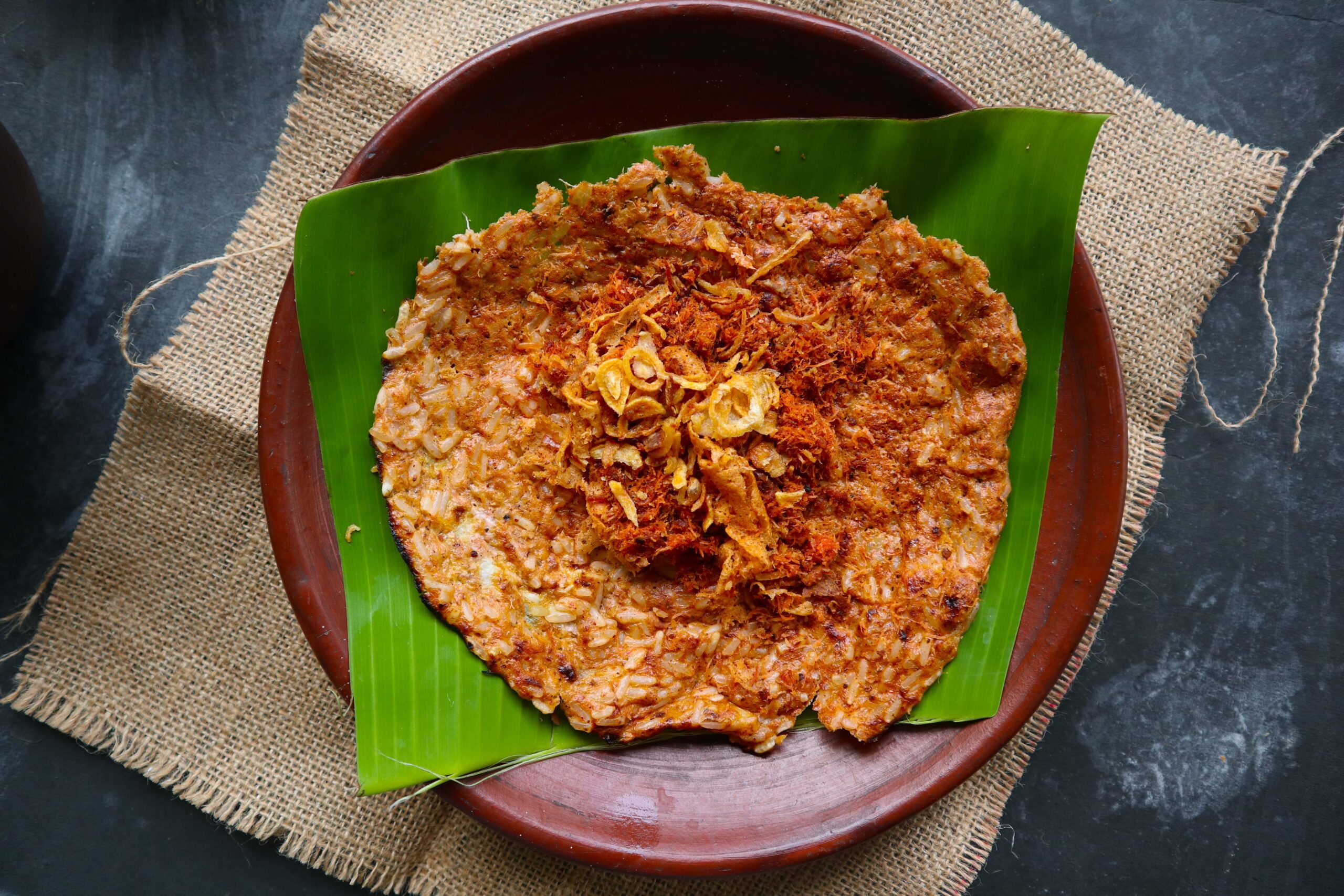
Kerak Telor, a traditional Indonesian omelet from Jakarta, is a savory treat made with glutinous rice and eggs. To prepare, soak 1/2 cup of sticky rice for 1 hour, then mix with 1 beaten egg, 2 tablespoons of shredded coconut, and 1 tablespoon of dried shrimp. Cook this mixture in a skillet over medium heat, allowing the bottom to turn crispy. Sprinkle with fried shallots and serve with sambal on the side for a spicy kick. The smoky flavor comes from cooking it over charcoal, which adds depth to the dish. Kerak Telor is a common festival food in Jakarta, beloved for its rich and unique taste.
Laap (Laos)
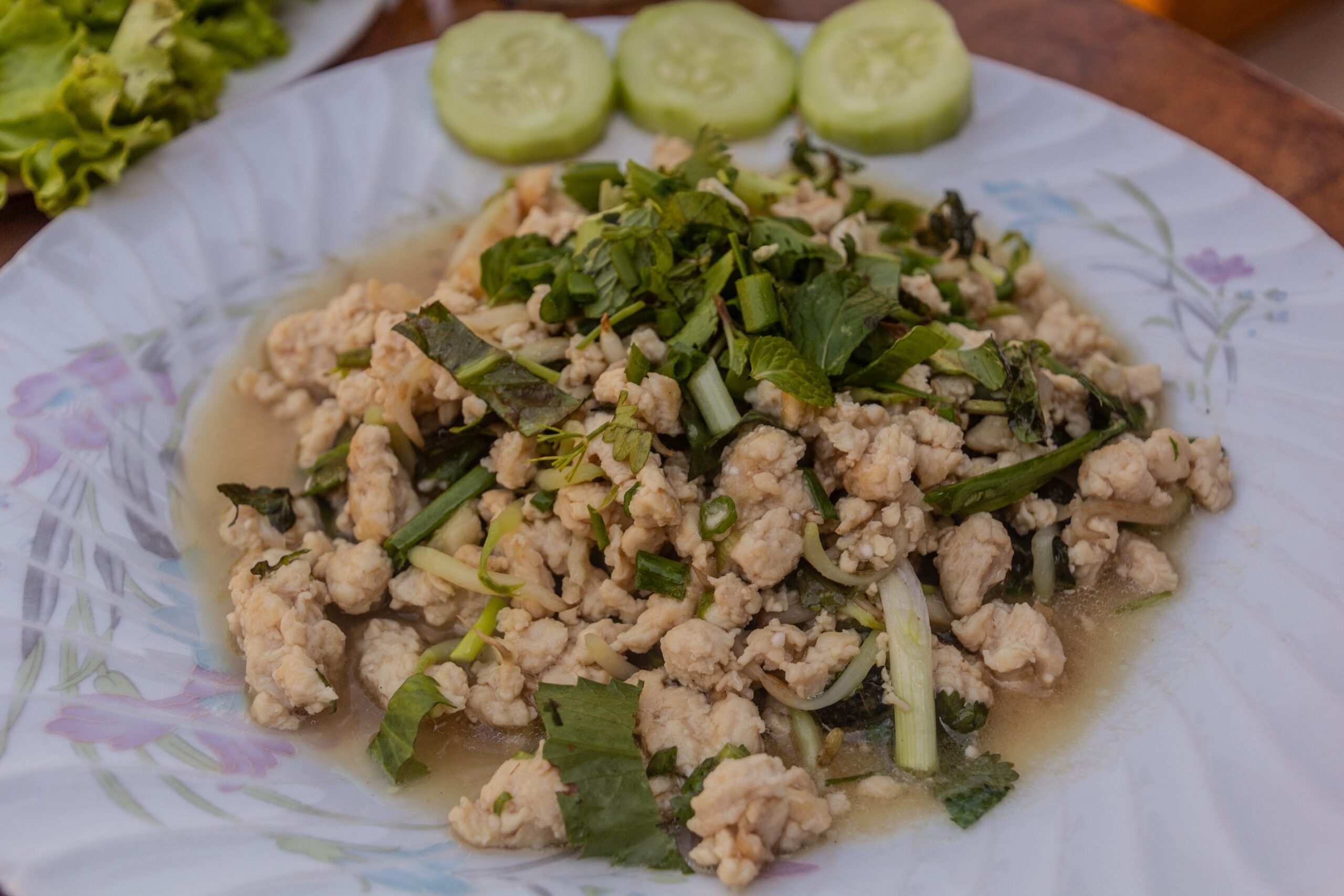
Laap, also called Larb, is a flavorful minced meat salad from Laos that’s often eaten at celebrations. To make Laap, cook 1/2 pound of minced pork, beef, or chicken and season with 1 tablespoon of fish sauce, 1 tablespoon of lime juice, and 1 teaspoon of ground toasted rice. Add fresh herbs like mint, cilantro, and green onions, which give the salad a bright aroma. For a spicier flavor, add sliced chilies to taste. Laap is usually served with sticky rice, balancing the tangy and savory notes of the dish. Each bite is refreshing and packed with flavors that define Laotian cuisine. Laap’s unique taste and fragrant aroma make it a memorable dish worth trying.
This article originally appeared on RetailShout.
More From RetailShout
ALDI’s 15 Sneak Peek Finds for the Week of 11/13/24 – 11/19/24

ALDI’s got some awesome finds lined up this week, perfect for getting ready for the holiday season. From cozy decor to gadgets that make life easier, there’s something for everyone in the lineup. Read More.

It’s amazing how Target manages to offer such stylish pieces that don’t break the bank. From home décor to trendy outfits, Target is full of hidden gems that look way more expensive than they are. Read More.

Fall is the perfect time to enjoy comforting meals paired with seasonal drinks that enhance the flavors of the season. From cozy dinners to festive gatherings, the right food and drink pairing can elevate your fall experience. Read More.

